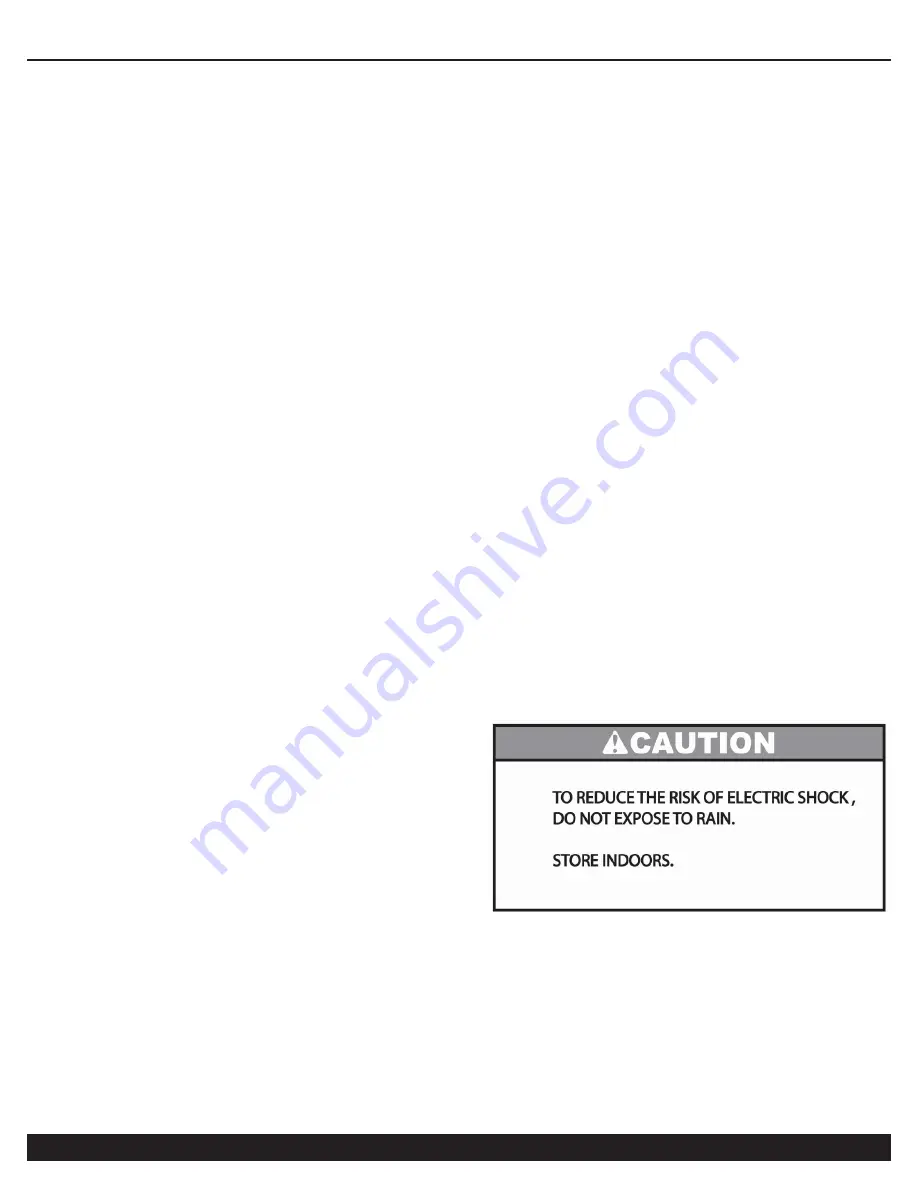
12
Customer Support: 1-866-409-4581
AiR CoMPReSSoR
MAINTeNANCe
draining the air tank
The frequency at which you should drain the air tank depends on
the environmental conditions and the amount of operating time
logged. The average draining frequency is every 1 to 2 days.
1.
Place the air compressor above a container capable of holding
water.
2.
With compressed air in the air tank, slowly turn the drain valve
knob to the forward (open) or straight position.
The water in the air tank will drain out.
3.
After all of the accumulated water has drained out, turn the
drain valve knob to the closed or left position in order to avoid
leakage.
4.
draining the air tank protects parts from rust and corrosion.
cleaning or changing the air filter
The air filter is designed to reduce noise and help prevent
particulates in the air from entering and damaging the air
compressor.
After being used for a period of time, the air filter will become
clogged. This will reduce the air intake capabilities of the air
compressor, reducing performance. Therefore, the air filter must
be cleaned or replaced regularly.
1.
Open the lid on the air filter, then remove the air filter element.
2.
To clean the element blow off or brush off the dirt and dust.
3.
If clogged, replace with a new air filter.
testing for Leaks
Make sure all connections are tight. do not overtighten.
A small leak in any hose or pipe connection will reduce the air
compressor's performance.
To test for small leaks, spray a small amount of soapy water on
the area suspected of leaking. If the soap bubbles, replace the
broken part.
cleaning
Clean items with a soft brush, or wipe with a moistened cloth
using a biodegradable solvent.
do not use flammable liquids such as gasoline or alcohol. Always
keep parts clean from dirt and dust for better performance.
pressure Switch
The pressure switch is factory pre-set to shut off at between
115 - 120 PSI and to re-start at between 85 -90 PSI
STORAge
before storing for a prolonged period of time:
1.
Turn off the power supply.
2.
disconnect the power cord from the power supply and wrap
the power cord around the air compressor handle to reduce
the risk of damage.
3.
Pull the relief valve and release all the pressure from the air
tank.
4.
Clean the air compressor to remove all dirt and dust.
5.
Cover the air compressor with a cover to protect the unit from
dust and moisture.
6.
do not stack or store any items on top of or around the air
compressor. damage could occur.


































